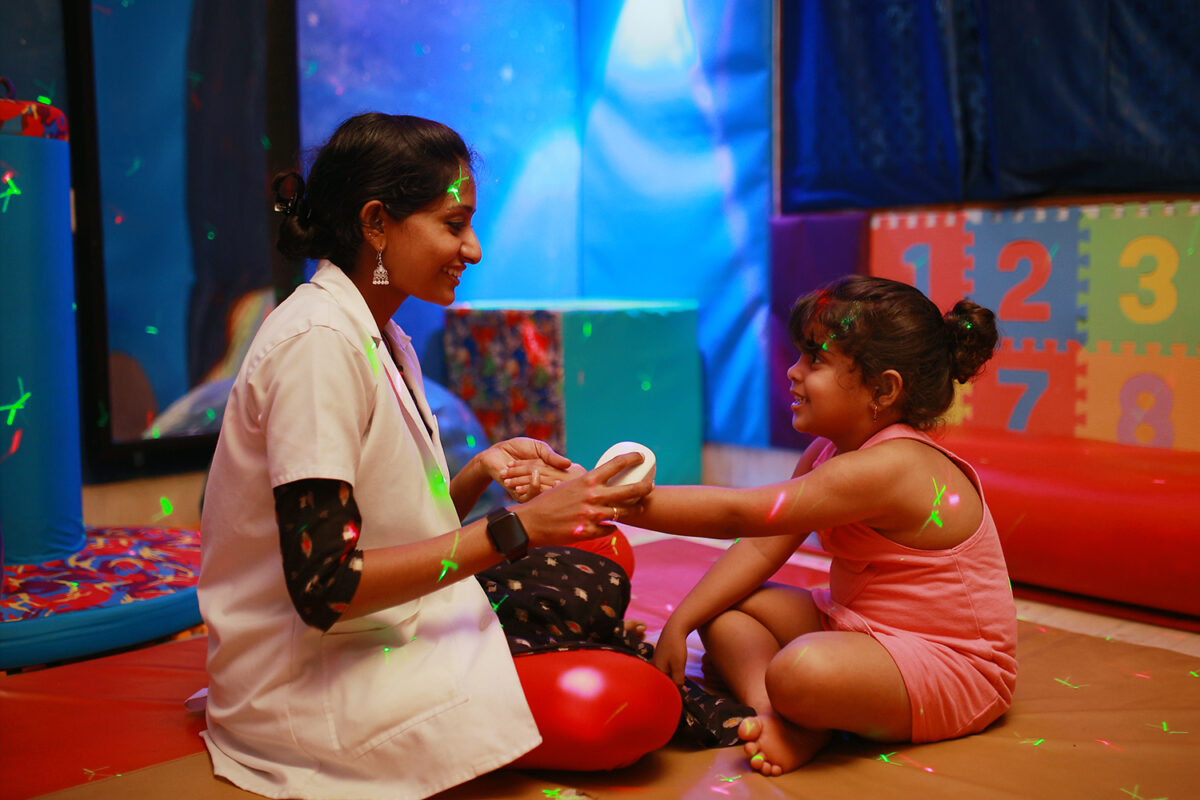
Sensory Processing and its Applications in ASD
In this world with over 7 billion humans, one thing we all have in common is our senses. In this social environment, we respond to various kinds of senses in order to receive information and to communicate with other beings. We get various cues from our surroundings that is fed to our brain using various senses provided by our overall sensory system. For example: While we are in a conversation with other persons, there are various senses that work together that enable each other to communicate in an adequate manner such as their looks, their voice, touch etc. Likewise, humans respond to different cues provided by our surroundings in different manners varying from individual to individual as human sensory system responses act in various methods i.e from person to person. For example, how we respond to situations that create happiness, fear, anxiety etc, differ as well.
Sensory processing deals with how the brain processes sensory input from multiple sensory modalities. These include the five classic senses of vision (sight), audition (hearing), tactile stimulation (touch), olfaction (smell), and gustation (taste). Other sensory modalities exist, for example, the vestibular sense (balance and the sense of movement) and proprioception (the sense of knowing one’s position in space) Along with Time (The sense of knowing where one is in time or activities). The above seven senses work in a multidisciplinary fashion that helps the brain to process & responds to different situations.
Autistic children are different in a lot of ways due to various reasons, sensory disorders being one of the major ones. Sensory processing in autistic children is different from that of normal children. Children with ASD possess either Hyper Level Sensory Processing or Hypo Level Sensory Processing Unlike normal children, where the sensory processing is in the normal range where they can accumulate the senses and respond to it in an appropriate manner. Autistic children often show tactile issues and other discomforts where parents conclude that it’s their adamant behaviour but it is actually a sensory dysfunction.
There are various categories in sensory processing disorder such as sensory modulation disorder, sensory discrimination disorder, & sensory-based motor disorder. Children suffering from any of these disorders may show much less sitting tolerance, learning disability, behavioural issues etc. Until we correct the sensory processing issues we will not be able to manage ASD and make them independent in society.
At Jeevaniyam we manage this issue by doing sensory profiling and finding out the issues that are faced by the child. Once the profiling is completed we analyse the results & provide professional sensory integration therapy along with sensory diets, Ayurveda medicines & treatments such as Udwarthanam, Nasyam, Thalapothichil, Dharas, Avagaham, Dhoopanam etc. in the needed cases. Tremendous improvement is seen in children when more than one therapies are scientifically used in one child with proper Ayurveda treatment protocol because these treatments are also good sensory diets as well. We perform these above-said diets in a periodic manner under the professional guidance of Ayurvedic Consultants at our state of the art lab at our facility. We also provide adequate training for parents or caretakers so that they can help the child follow the sensory diet chart that is to be followed at home.
